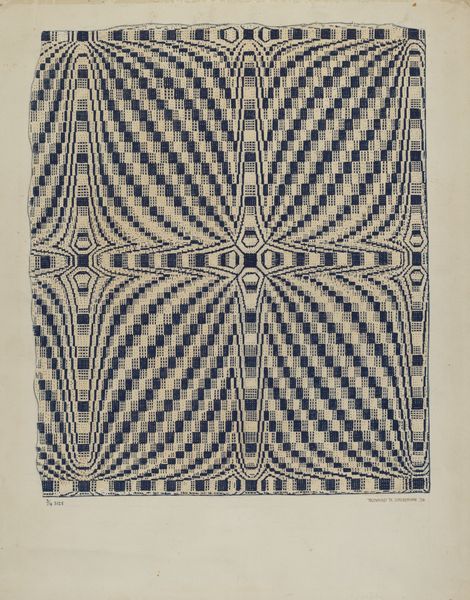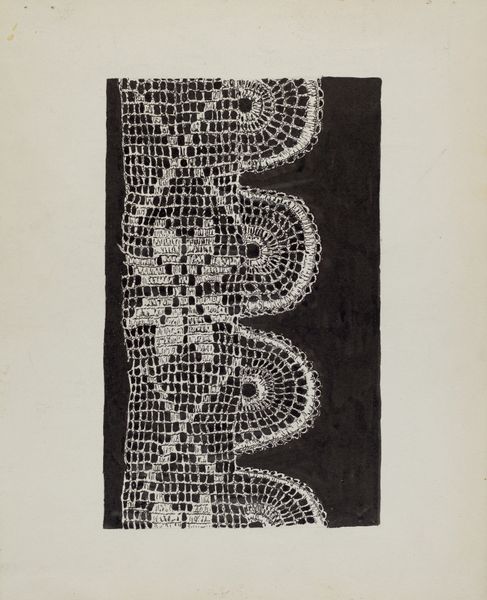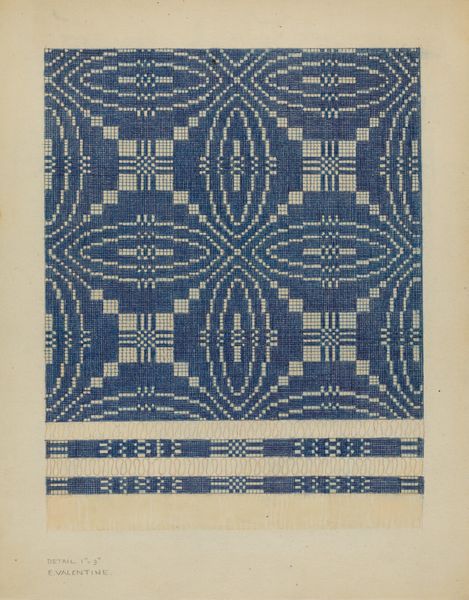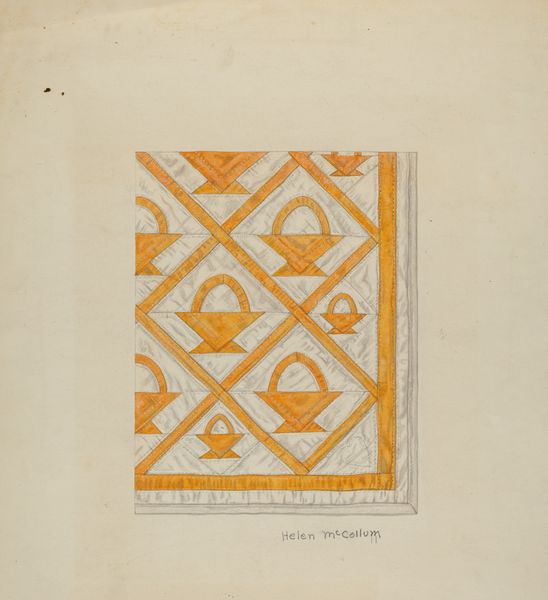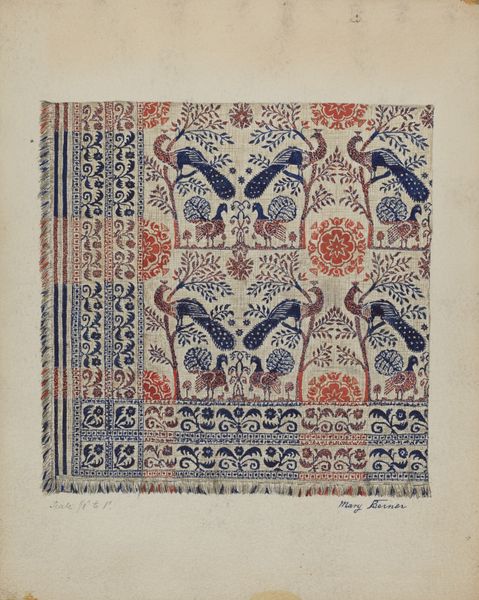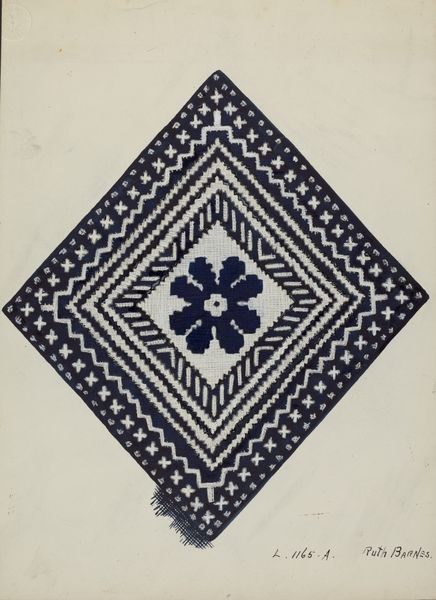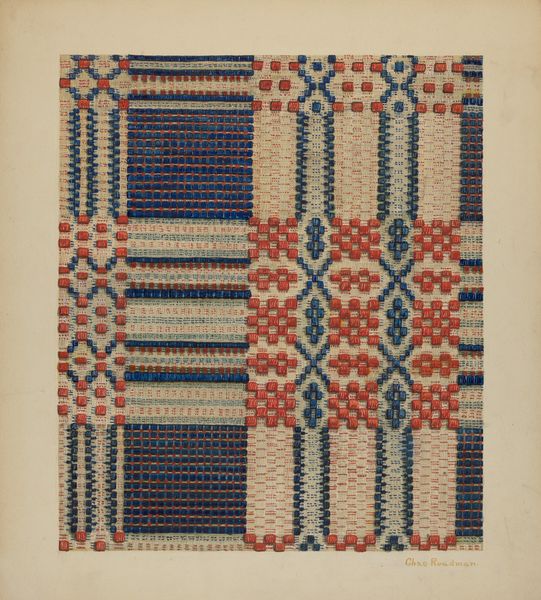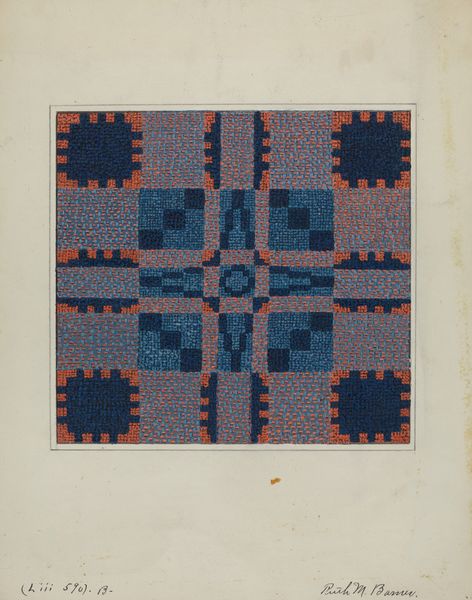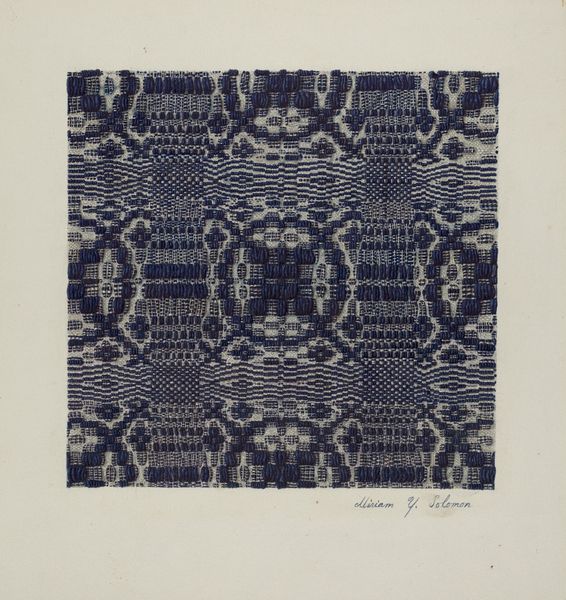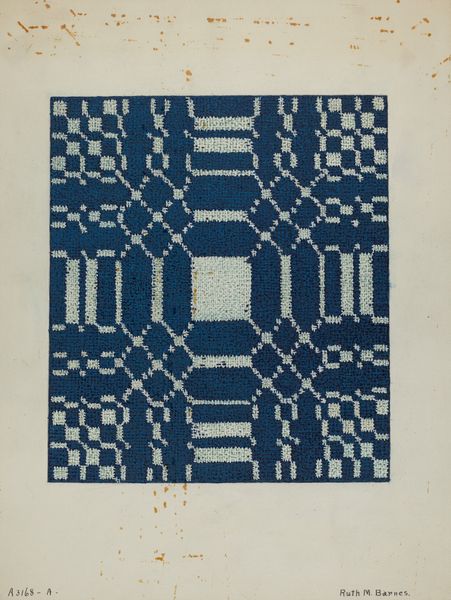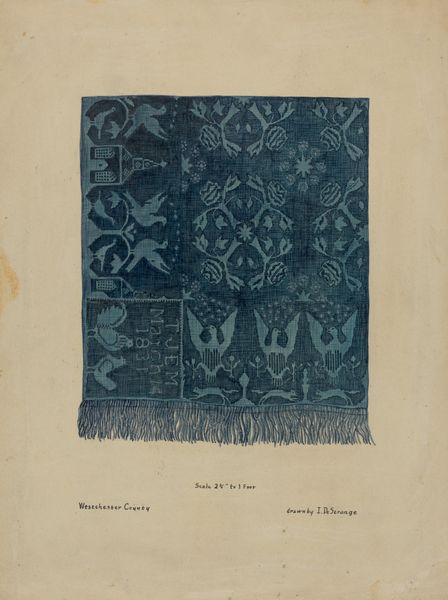
drawing, weaving, textile
#
drawing
#
pattern
#
weaving
#
textile
#
geometric
#
imprinted textile
Dimensions: overall: 39.7 x 29.7 cm (15 5/8 x 11 11/16 in.) Original IAD Object: 82" wide; 91" long
Copyright: National Gallery of Art: CC0 1.0
Curator: This is a coverlet created around 1940 by Ann Belle N. Eubank, it features a pattern made with weaving and textile techniques, plus the application of what looks like some drawing. First impressions? Editor: Well, the most striking thing is definitely the mesmerizing geometric pattern! There’s a lovely stillness to the design but it seems too austere to keep me warm! Curator: Interesting observation! Thinking about textiles from a historical angle, particularly woven coverlets, brings up notions of domestic labor, and a whole industry driven largely by the hands of women in their homes, yet undervalued as artistic work... This reminds me of Silvia Federici's thesis in "Caliban and the Witch," where she talks about women’s unwaged labor within capitalism. Editor: It really speaks to the time, doesn’t it? My first thought drifted towards optical illusions. Look at the way those concentric squares pull you in! It's both grounding and incredibly dizzying at the same time, the overall visual effect has a unique sort of charm. I also get the impression the maker wasn't rigidly following rules of the grid; each section has minor adjustments making this grid seem "alive" with little breathing imperfections. Curator: Exactly! This tension you point out, between precision and slight deviation, might suggest resistance or even rebellion from enforced expectations of gender. Textile arts were so often deemed as simply functional! Editor: That’s a fair observation. I keep thinking about it in relation to abstraction. If we accept textiles like this as art rather than purely domestic craft, does it change how we view the development of abstraction during that period? It makes me wonder where Eubank found the space to design these pieces, to make and to record all these intricate arrangements. Curator: And how we can weave the history of oppression of women and people of colour into conversations on artmaking practices. And this piece reminds us of this challenge in an intimate manner... Editor: Well, this little chat certainly got me thinking beyond just counting the threads! It’s always eye-opening to revisit an artwork while listening to varied interpretations. Curator: Likewise. Sometimes it feels like my art practice exists in the liminal space where history, activism, domesticity, and, say, rebellion collide, and talking it out certainly untangles those complex themes further.
Comments
No comments
Be the first to comment and join the conversation on the ultimate creative platform.

